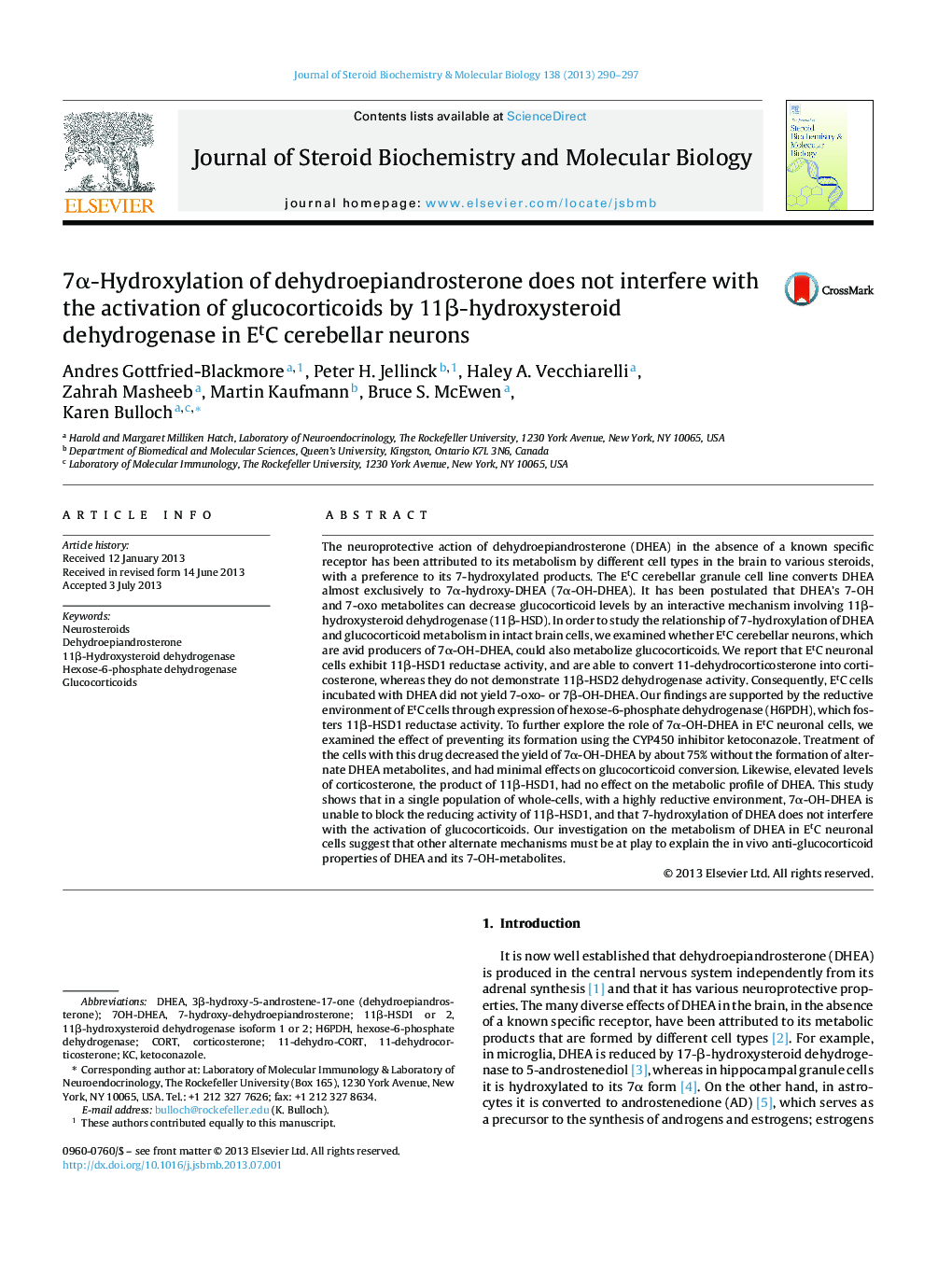| کد مقاله | کد نشریه | سال انتشار | مقاله انگلیسی | نسخه تمام متن |
|---|---|---|---|---|
| 8339002 | 1541012 | 2013 | 8 صفحه PDF | دانلود رایگان |
عنوان انگلیسی مقاله ISI
7α-Hydroxylation of dehydroepiandrosterone does not interfere with the activation of glucocorticoids by 11β-hydroxysteroid dehydrogenase in EtC cerebellar neurons
دانلود مقاله + سفارش ترجمه
دانلود مقاله ISI انگلیسی
رایگان برای ایرانیان
کلمات کلیدی
موضوعات مرتبط
علوم زیستی و بیوفناوری
بیوشیمی، ژنتیک و زیست شناسی مولکولی
زیست شیمی
پیش نمایش صفحه اول مقاله

چکیده انگلیسی
The neuroprotective action of dehydroepiandrosterone (DHEA) in the absence of a known specific receptor has been attributed to its metabolism by different cell types in the brain to various steroids, with a preference to its 7-hydroxylated products. The EtC cerebellar granule cell line converts DHEA almost exclusively to 7α-hydroxy-DHEA (7α-OH-DHEA). It has been postulated that DHEA's 7-OH and 7-oxo metabolites can decrease glucocorticoid levels by an interactive mechanism involving 11β-hydroxysteroid dehydrogenase (11β-HSD). In order to study the relationship of 7-hydroxylation of DHEA and glucocorticoid metabolism in intact brain cells, we examined whether EtC cerebellar neurons, which are avid producers of 7α-OH-DHEA, could also metabolize glucocorticoids. We report that EtC neuronal cells exhibit 11β-HSD1 reductase activity, and are able to convert 11-dehydrocorticosterone into corticosterone, whereas they do not demonstrate 11β-HSD2 dehydrogenase activity. Consequently, EtC cells incubated with DHEA did not yield 7-oxo- or 7β-OH-DHEA. Our findings are supported by the reductive environment of EtC cells through expression of hexose-6-phosphate dehydrogenase (H6PDH), which fosters 11β-HSD1 reductase activity. To further explore the role of 7α-OH-DHEA in EtC neuronal cells, we examined the effect of preventing its formation using the CYP450 inhibitor ketoconazole. Treatment of the cells with this drug decreased the yield of 7α-OH-DHEA by about 75% without the formation of alternate DHEA metabolites, and had minimal effects on glucocorticoid conversion. Likewise, elevated levels of corticosterone, the product of 11β-HSD1, had no effect on the metabolic profile of DHEA. This study shows that in a single population of whole-cells, with a highly reductive environment, 7α-OH-DHEA is unable to block the reducing activity of 11β-HSD1, and that 7-hydroxylation of DHEA does not interfere with the activation of glucocorticoids. Our investigation on the metabolism of DHEA in EtC neuronal cells suggest that other alternate mechanisms must be at play to explain the in vivo anti-glucocorticoid properties of DHEA and its 7-OH-metabolites.
ناشر
Database: Elsevier - ScienceDirect (ساینس دایرکت)
Journal: The Journal of Steroid Biochemistry and Molecular Biology - Volume 138, November 2013, Pages 290-297
Journal: The Journal of Steroid Biochemistry and Molecular Biology - Volume 138, November 2013, Pages 290-297
نویسندگان
Andres Gottfried-Blackmore, Peter H. Jellinck, Haley A. Vecchiarelli, Zahrah Masheeb, Martin Kaufmann, Bruce S. McEwen, Karen Bulloch,